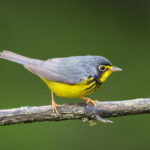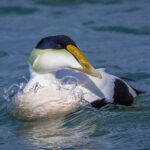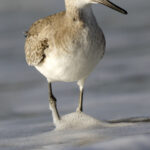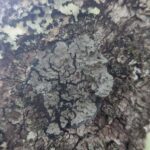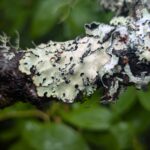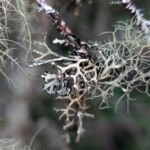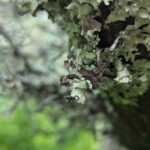Blanche Peninsula: A Landmark Achievement for Coastal Conservation
01 Oct 2024
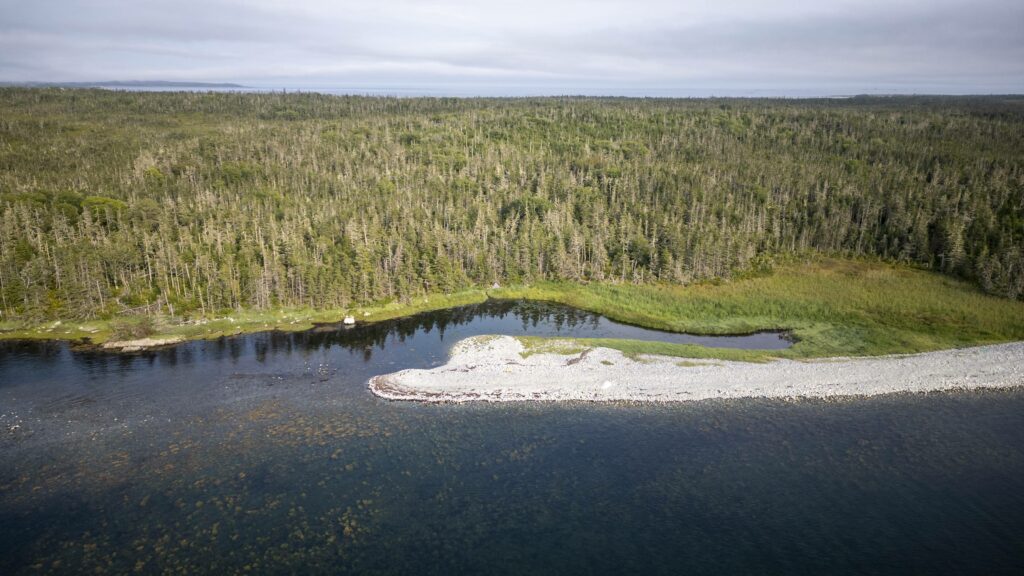
Thanks to an incredible outpouring of support for Nova Scotia’s beloved coast, we are proud to announce the success of the most ambitious project in our thirty-year Nature Trust history – and the largest acquisition of privately owned coastline in Nova Scotia.
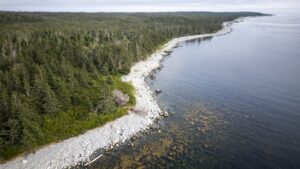
Rocky shoreline of Blanche Peninsula – credit A for Adventure
The Blanche Peninsula is one of the last highly biodiverse and intact coastal lands of its size in Nova Scotia. With your help, we have officially protected a large property covering the majority of the peninsula as well as a large beach section on the southwest coast. Together these lands ensure that 1,772 acres (717 hectares) of this ecological treasure will be protected – forever.
Blanche Peninsula can be found along the southwest coast of Shelburne County within the Mi’kmaw district of Kespukwitk. It is located within several Key Conservation Areas including the Southwest Nova Biosphere Reserve, Kespukwitk/Southwest Nova Priority Place, and the South Shore Important Bird Area.
Recognized in the scientific community as one the most important coastal peninsulas in the province for bird conservation and recovery, it supports crucial stopover sites for migratory birds, and habitat for overwintering and nesting birds, including landbirds, shorebirds, waterfowl and raptors, continental migrants and species at risk. Located on the Atlantic Flyway, it is one of a few essential stopovers where migratory birds can feed and rest before launching themselves across the Gulf of Maine.
Its diverse coastal ecosystems also provide critical habitat for many breeding and nesting birds, and refuge for vagrants (birds blown off course by Atlantic storms). Birders and non-birders alike may have seen the news last July that a Burrowing Owl was photographed on the now-protected Blanche Beach property; it is suspected that the owl, native to Florida, was using the property as a rest stop after being blown off course.
Altogether, preliminary field research identified 174 bird species on the property, with an incredible 60 species recorded in a single migration season using acoustic monitoring.
The peninsula is also home to a number of rare and endangered lichens, including Blue Felt Lichen and Powdered Moon Lichen. Preliminary field research also identified Pustulate Revolute Loop Lichen, which has never before been recorded on the Atlantic coast, and Case’s Speckled-back Lichen, which was only discovered for the first time in Nova Scotia last year.
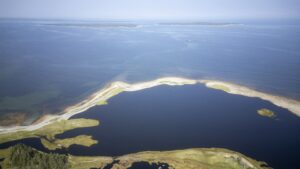
Aerial view of Blanche Peninsula beach with Cape Negro Island visible in the distance. Photo credit: A for Adventure
Together with the recently protected Cape Negro Island, the Blanche Peninsula greatly expands the growing assemblage of land trust and government coastal protected areas on the South Shore. This critical win for nature preserves essential ecological connectivity, and creates “stepping stones” to link together critical migratory stopovers. More protected coastline also provides important nature-based solutions to climate change impacts along our coast.
At a time when Nova Scotians are deeply concerned about coastal protection and public access to the coast, we are so honoured to be able to share this incredible success for Nova Scotia’s natural legacy with all of you.
This achievement is part of the Nature Trust’s Hope for the Coast campaign, through which we are aiming to secure at least 5,000 acres of critical coastal habitat. The Blanche Peninsula brings us within sight of that target!
This project was made possible by the Government of Canada through the Natural Heritage Conservation Program (Land Trust Conservation Fund). The protection of Blanche Beach was undertaken with the financial support of the Government of Canada through the federal Department of Environment and Climate Change. Both projects were also generously supported by the Nova Scotia Crown Share Land Legacy Trust, which is a critical source of funding for land trusts to advance the protection of ecologically significant, threatened and irreplaceable natural areas on private lands in Nova Scotia.
Finally, this milestone in conservation history was achieved through the incredible generosity of hundreds of individual donations from the community, who stepped up to raise Hope for the Coast. These contributions were critical in unlocking funds to ensure that this irreplaceable part of Nova Scotia’s coastal legacy will be protected, forever.

Government of Canada’s Natural Heritage Conservation Program (NHCP)
The Government of Canada’s Natural Heritage Conservation Program (NHCP) is a unique partnership that supports the creation and recognition of protected and conserved areas through the acquisition of private land and private interest in land. To date, the Government of Canada has invested more than $440 million in the Program, which has been matched with more than $870 million in contributions raised by Nature Conservancy of Canada, Ducks Unlimited Canada and the country’s land trust community leading to the protection and conservation of more than 700,000 hectares of ecologically sensitive lands.

Nova Scotia Nature Agreement
The Nova Scotia Nature Agreement is a project of the Province of Nova Scotia. Working with conservation partners, the goal is to increase the amount of protected and conserved areas and advance an integrated approach to the protection, conservation and recovery of biodiversity, including habitat, species at risk and migratory birds, in the Province. The Nova Scotia Nature Agreement is funded by Environment and Climate Change Canada, through the Canada Nature Fund.

